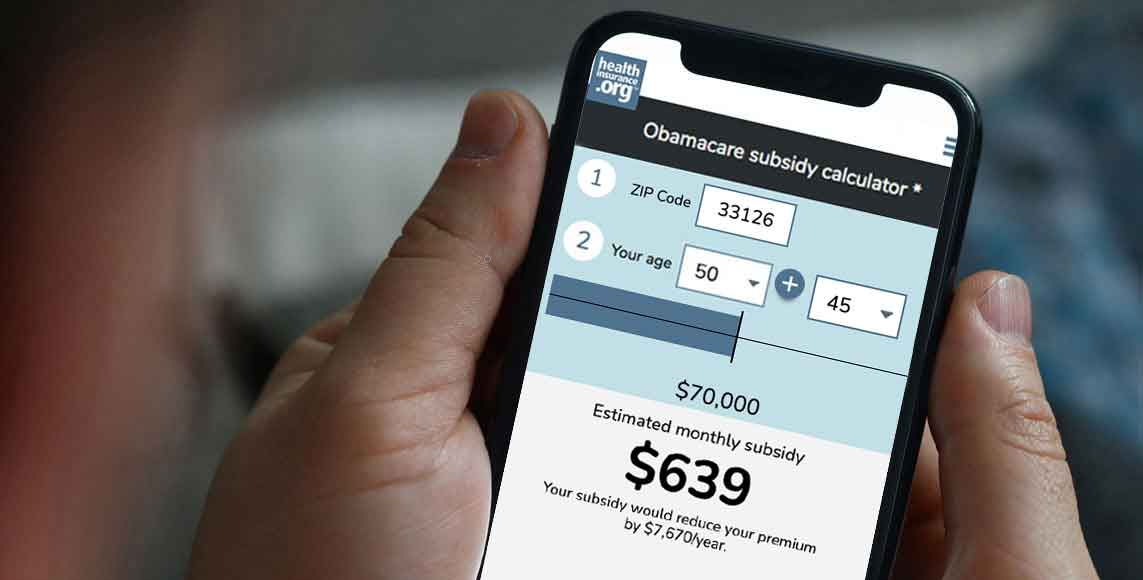Please provide your zip code to see plans in your area.
Featured

Featured

off-exchange health insurance plan
What is an off-exchange health insurance plan?
What is an off-exchange health plan?
An off-exchange plan is a health insurance policy that is purchased directly from an insurance company or through an agent or broker, outside of the official ACA-created health insurance exchange. (Note that agents and brokers also help people enroll in on-exchange plans.)
When we refer to “off-exchange” plans, we’re only talking about individual major medical coverage – that is, the plans to which Affordable Care Act regulations apply. A wide range of “excepted benefit” plans are also sold outside the exchanges in most states, and are exempt from ACA regulations. But our discussion of off-exchange plans only refers to ACA-compliant plans sold outside the exchanges
Off-exchange plans are not available in the District of Columbia. Regulators there determined that coverage would only be available through the exchange. In Vermont, off-exchange plans were not available in 2014 or 2015, but “full-cost individual direct enrollment” (ie, off-exchange) became available in Vermont starting in 2016.
How many people are enrolled in off-exchange health plans?
Enrollment data for off-exchange plans are not tracked as closely as exchange enrollment data, but it was estimated at more than 5 million people in 2015 and 2016. It declined fairly quickly in 2017 and 2018, which was unsurprising given the magnitude of the premium increases in the individual market in those years. By 2019, a Kaiser Family Foundation analysis estimated that off-exchange enrollment in ACA-compliant plans stood at only about 2.1 million people.
And data published by CMS in the fall of 2020 confirm this; total unsubsidized enrollment stood at 3.4 million in 2019, and about 1.3 million of those people had coverage through the exchange, while the other 2.1 million had off-exchange plans.
In October 2021, however, ACA Signups’ Charles Gaba calculated an estimated off-exchange enrollment of somewhere between 2.3 and 3 million people.
For the majority of exchange enrollees, rate increases are mostly offset by increasing premium subsidies. But off-exchange enrollees bear the full brunt of the rate hikes each year, as subsidies are not available off-exchange. (Many off-exchange enrollees wouldn’t be eligible for subsidies even if they enrolled in the exchange – but some would).
On the other hand, off-exchange enrollees benefit directly when a state implements a reinsurance program that reduces premiums, while residents in the same state who receive premium subsidies can sometimes end up paying higher net premiums as a result of the overall rates decrease.
Are off-exchange plans regulated like on-exchange plans?
The Affordable Care Act’s consumer protections apply to all individual major medical policies, regardless of whether the coverage is sold in the exchange. In addition to the basic requirements to which all policies must now adhere, plans that are sold in the exchanges must also be certified as qualified health plans (QHPs).
Although all of the plans sold in the individual market – on or off the exchange – must meet the ACA’s requirements, QHPs can be required to comply with additional standards that vary from one state to another.
QHPs in all states must offer at least one Gold plan, one Silver plan, and one child-only plan. (As of 2018, this rule has been tightened up, requiring QHP issuers to offer at least one Gold plan and one Silver plan in each area where they offer exchange coverage. They are not allowed, for instance, to offer a Silver plan and a Gold plan in limited areas within a state, and then offer only Bronze plans in other areas of the state.)
QHPs can also be sold off-exchange. Some carriers choose to sell their certified QHPs both on and off-exchange (with all enrollees in the same pool for risk-sharing purposes) – but policies sold off-exchange do not have to be certified as QHPs.
They are still good quality plans though. The days of Swiss-cheese coverage are over, regardless of how policies are purchased. And off-exchange plans are guaranteed issue regardless of medical history, just like policies in the exchanges. The same open enrollment dates apply outside the exchange, and most of the special enrollment period rules also apply to plans purchased outside the exchange.
Do I need an off-exchange plan if my employer is offering an ICHRA?
Probably, yes. If your employer is offering an ICHRA benefit, and also providing a way for you to payroll deduct your portion of the premiums that aren’t covered by the ICHRA, you’ll need to enroll in an off-exchange plan in order to take advantage of the payroll deduction.
Internal Revenue Code does not allow any sort of pre-tax payroll deduction for on-exchange premiums, but it does not prohibit pre-tax payroll deductions for off-exchange premiums.
Employers that establish ICHRAs might offer the pre-tax payroll deduction as a way to reduce taxes for the employer and employee, and also as a means of ensuring that the employees’ portion of the premiums are paid on time and that employees’ coverage doesn’t lapse due to lack of premium payments. But again, this benefit can only be offered to employees who are enrolled in off-exchange plans.
So if you’re offered an ICHRA benefit and a chance to payroll deduct your portion of the premiums, you’ll want to consider off-exchange plans that are available in your area. You can use the ICHRA benefit for on-exchange or off-exchange plans, but you can only get the tax advantage of paying your premiums on a pre-tax basis if your plan is purchased outside the exchange.
Can I get ACA’s subsidies with an off-exchange health plan?
The exchange is the best option for people who qualify for premium subsidies and cost-sharing subsidies, as subsidies are only available for plans purchased in the exchanges.
In October 2016, HHS estimated that there were 2.5 million people with off-exchange coverage who would be eligible for subsidies if they switched to the exchange instead. Some of those people might have been aware of the subsidies in the exchange but may have opted for off-exchange plans for reasons other than cost (such as provider networks, or specific plan options). But it’s also likely that a good number of those folks weren’t aware of how much less they could be paying in premiums if they switched to the exchange.
And at least through the end of 2022, many people who were previously ineligible for subsidies are subsidy-eligible as a result of the American Rescue Plan (ARP). The ARP eliminated the “subsidy cliff” for 2021 and 2022, so subsidy eligibility no longer ends when a household’s income exceeds 400% of the poverty level. And some people with income below 400% of the poverty level who still weren’t subsidy-eligible in past years will find that they are through the end of 2022, due to the reduction in the percentage of income that people have to pay for the benchmark plan. These provisions will sunset at the end of 2022 unless Congress extends them.
In some areas since 2018, people have found that they can get Bronze plans for free or nearly free, or Gold plans for less than the cost of a Silver plan, due to the way states and insurers are handling the loss of federal funding for cost-sharing reductions, and the resulting impact that’s had on premiums. And the prevalence of free plans — at the Bronze, Silver, and Gold levels — is even higher in 2021 and 2022, as a result of the ARP (this map, which applies to states that use HealthCare.gov, shows the percentage of the poverty level that a person could earn in 2021 and still obtain premium-free plans at each metal level).
To make a long story short, don’t assume you aren’t eligible for subsidies without actually going to the exchange website and checking. This is true every year, but it’s particularly true through the end of 2022, since subsidies are so much larger and more widely available under the ARP. But you can’t get subsidies — upfront or on your tax return — if you’re enrolled in an off-exchange plan.
‘Silver switch’ approach to CSR funding pushes some enrollees towards off-exchange plans (but American Rescue Plan leads some back to the exchange)
In the fall of 2017, the Trump Administration announced that the federal government would no longer fund the ACA’s cost-sharing reductions (CSR). States and insurers took varying approaches to address this, but the most common strategy was to add the cost of CSR to Silver plan premiums, since CSR benefits are only available on Silver plans.
The resulting increase in Silver plan rates meant that premium subsidies grew significantly for 2018 in many states (since the premium subsidy amounts are based on the cost of Silver plans), and have remained disproportionately large ever since, making many subsidized enrollees better off than they would otherwise have been.
But what about people who don’t get premium subsidies? Regulators realized that if those enrollees wanted to buy Silver plans, they’d be stuck with the higher premiums. So some states and insurers opted to add the cost of CSR only to on-exchange Silver plan rates, and create slightly different off-exchange versions of those plans, without the cost of CSR added to the premiums.
(In some states, the off-exchange plans are identical to the on-exchange versions, but the cost of CSR has only been added to the on-exchange version; CMS eliminated the “meaningful difference” rule altogether as of 2019.)
The majority of the states use this “Silver switch” approach, and it continues to be used by most insurers in nearly all states in 2022. The result is lower-cost off-exchange Silver plan rates, compared with the on-exchange Silver plan rates, for people who don’t qualify for premium subsidies. This is considered the strategy that’s most protective for the greatest number of consumers.
But there was also a downside to this approach in 2018 and 2019, because consumers couldn’t switch from an off-exchange plan to an on-exchange plan in the middle of the year unless they had a qualifying event – and a change in income was not considered a qualifying event unless the person was already enrolled in a plan through the exchange.
So in order to take advantage of the cost savings offered by purchasing a Silver plan outside the exchange (assuming the person was only interested in a Silver plan, and would not want to buy a non-Silver plan through the exchange), enrollees had to fully commit to the off-exchange plan for the whole year – even if their income dropped mid-year into a range that would have made them subsidy-eligible.
So HHS created a solution, allowing people with off-exchange coverage to switch to an on-exchange plan if they experience an income change that makes them eligible for subsidies. This was supposed to be available in most states by 2020. (The language in CFR 155.420(d)(6)(v) clarifies that the special enrollment period is available “at the option of the exchange,” which means state-run exchanges aren’t required to offer it.) However, we’ve had reports from brokers who noted that it has not always been particularly easy to access, even in states that use HealthCare.gov.
However, even if this plan transition is available, there is no guarantee that an insurer will agree to carry over a person’s already-spent out-of-pocket costs to a new plan in the exchange. So this is something to ask the insurer before making the switch to a plan in the exchange (this is not an issue during open enrollment, however, as deductibles and out-of-pocket maximums will reset at the start of the new year anyway).
It should also be noted that if you’re in a state that has expanded Medicaid and you lose your job mid-year or have a very significant decrease in income, you may qualify for Medicaid based on your new monthly income (Medicaid eligibility is based on monthly income rather than annual income).
If your income later increases, it may make you eligible for premium subsidies instead of Medicaid. You would report your new income to the exchange, and the resulting loss of Medicaid would trigger a special enrollment period that would allow you to sign up for a plan in the exchange. This is another potential way to go from off-exchange to on-exchange coverage mid-year, with Medicaid in the middle, and then a loss-of-coverage SEP when Medicaid ends. (Note that until the end of the COVID public health emergency, states cannot disenroll people from Medicaid unless they specifically request it or move out of state.)
What is Enhanced Direct Enrollment?
As of 2019, the “enhanced direct enrollment” (EDE) process allows consumers (in states that use HealthCare.gov) to enroll in an on-exchange plan via approved web brokers’ and insurers’ sites, without having to visit HealthCare.gov (additional information available here and here).
This is an updated version of the “proxy direct enrollment pathway that was available in 2018. CMS has published a list of the entities that have been approved to use the EDE process, and it’s updated over time.
Enhanced direct enrollment is still considered “on-exchange” – even though the consumer doesn’t visit HealthCare.gov – as the information you provide on the insurer’s or web broker’s site will be transmitted to HealthCare.gov and you’ll be enrolled in an on-exchange plan. (The enhanced direct enrollment system that HHS has created is only applicable to the states that use HealthCare.gov; state-run exchanges that use their own enrollment platforms can establish their own direct enrollment pathways if they wish to do so.)
HHS prohibits web brokers from basing their plan display on compensation that the web broker receives from insurers. And if a web broker is offering non-QHPs in addition to QHPs, they have to be marketed in a way that minimizes consumer confusion and prevents people from inadvertently enrolling in a non-QHP when they’re trying to shop for a QHP.
If you’re working with a web broker and you’re not sure how your enrollment is being processed, ask questions. Web brokers certified with HealthCare.gov can enroll people on-exchange using the enhanced direct enrollment path, but they are generally also willing and able to enroll people in off-exchange plans if that’s what best fits the consumer’s needs (for example, if the person has an ICHRA and needs an off-exchange plan in order to have their portion of the premiums paid on a pre-tax basis).
So using a broker does not mean that you’re going off-exchange. Brokers can assist you with the process of enrolling directly via the exchange, or they can help you complete your exchange enrollment (in a HealthCare.gov state) using the enhanced direct enrollment pathway. If you call one of healthinsurance.org’s partners at 1-866-689-8675, you’ll be connected with a licensed, exchange-certified broker who can enroll you in an ACA-compliant plan, on or off-exchange.
Plan design, pricing may differ between on- and off-exchange plans
If an insurance carrier sells individual-market plans both on- and off-exchange, all of those plans are combined into one risk pool for rate-setting and risk adjustment purposes. So although the off-exchange population tends to be wealthier (generally not eligible for subsidies) and that correlates with healthier, the insurer still has to combine the total individual market experience into one pool to set rates.
The on- and off-exchange plan rates can be different, however, if the plan designs and/or provider networks are different. And as described above, insurers in many states are adding the cost of CSR only to on-exchange Silver plans, making their off-exchange Silver plans less expensive than their on-exchange Silver plans. If you’re not eligible for premium subsidies and you want a Silver plan, an off-exchange version might be a better option.
Some insurers only sell off-exchange plans, which allows them to better target wealthier – and thus generally healthier – enrollees. If you’re in a state where there are different carriers offering plans in the on- and off-exchange markets, you’ll need to compare both if you’re not eligible for a premium subsidy. If you are eligible for a premium subsidy, be aware that selecting an off-exchange plan means you’re forfeiting your subsidy, and you won’t have an option to claim it on your tax return after the year is over.
Brokers who are certified to sell exchange policies should be able to provide you with both on- and off-exchange options, all in one place. Be aware that the open enrollment window for individual health insurance applies both on- and off-exchange. The open enrollment window runs from November 1 through January 15 in most states, although there are some state-run exchanges with different enrollment schedules.
If you qualify for a subsidy, stick with the exchange. But if you don’t, take your time, compare all of the options, and then apply for the policy that makes the most sense for your situation. The ACA has improved the quality of coverage in the individual market and has also expanded the options that are available for many people, thanks to guaranteed issue coverage and subsidies. Even though the exchanges are a heavily publicized part of the ACA, the improvements from the law extend to off-exchange plans as well. Consumers can feel confident regardless of which option they choose.
Pediatric dental: You have to buy it if you go off-exchange
Pediatric dental – one of the ACA’s essential health benefits – could also play a role in your decision. In most states, you can purchase coverage in the exchange that does not include pediatric dental, as long as the exchange offers stand-alone dental plans.
There are some exceptions: some states require pediatric dental to be embedded in all health plans; in some cases, carriers have simply opted to embed pediatric dental; and in some states, pediatric dental is sold as stand-alone coverage but cannot be waived – the specifics vary considerably from one state to another).
But off-exchange, you cannot avoid purchasing pediatric dental (although you should be able to get a zero-premium pediatric dental plan if you don’t have children). For some enrollees, this might be a reason to shop in the exchange, if they’d rather not purchase pediatric dental coverage.
Plans that aren’t major medical coverage are not regulated by the ACA
Since some types of coverage are not regulated under the ACA, a caveat is necessary here.
All non-short-term major medical health insurance plans with effective dates of January 1, 2014 or later are required to be ACA-compliant. This is true whether they’re sold in the exchange or off-exchange.
But there are a variety of coverage types that are not regulated by the ACA. They include limited-benefit plans, short-term coverage (sometimes called short-term major medical), discount plans, critical illness insurance plans, accident supplements, health care sharing ministry plans, and Farm Bureau plans in states that have agreed to allow such plans to operate as “non-insurance” plans.
These plans are sold outside the exchanges, but they’re not what we’re talking about when we say “off-exchange plans.” In most cases, they do not conform to the regulations laid out in the ACA. In general (with the exception of short-term health insurance to bridge a short gap in coverage, Farm Bureau plans, and possibly sharing ministry plans), they’re not designed to serve as stand-alone coverage. And in most cases, relying solely on them for your health coverage could leave you sorely underinsured.
Louise Norris is an individual health insurance broker who has been writing about health insurance and health reform since 2006. She has written dozens of opinions and educational pieces about the Affordable Care Act for healthinsurance.org.
Related articles
Sweeping health reform legislation delivered a long list of provisions focused on health insurance affordability, consumer protections.







